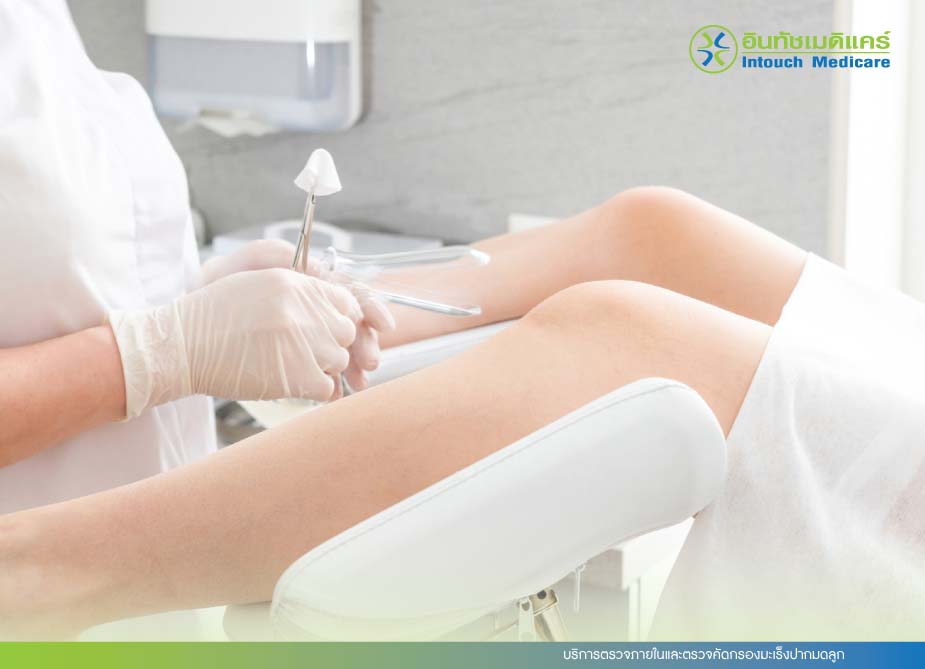Pelvic examination is a procedure for examination of both outside and inside of the female genitals, including the vagina, vagina, cervix, uterus and ovaries. The exam involves a physical assessment, potentially including the use of instruments for better visualization and palpation of the cervix and vagina. Obstetricians often follow a systematic approach, which includes “observing, palpating, squeezing, using instruments, and pressing”.
Pelvic examination and cervical cancer screening are distinct procedures but are often performed together as part of a routine gynecological checkup. If you’re undergoing cervical cancer screening, it’s common for your doctor to conduct a pelvic exam at the same time. Clinics will have details on th/e prices for both pelvic examination and cervical cancer screening, which can be reviewed before the appointment.
Interesting Topics on Pelvic Examination
- Why is a pelvic exam important?
- Pelvic exam and cervical cancer screening package
- Principles of gynecologic pelvic exam
- Why is a pelvic exam necessary?

- When should you get a pelvic exam?
- Do single women need to get pelvic exams?
- What is cervical cancer?
- Why do you need a cervical cancer screening?

- Methods of cervical cancer screening
- Who should get a cervical cancer screening?

Pelvic exam and cervical cancer screening package
-
A pelvic exam is crucial for identifying any possible abnormalities, with or without symptoms, in the female reproductive system, including dangerous conditions like cervical cancer. Appropriate symptom follow-up, prompt treatment, and avoidance of disease progression are all made possible by early detection through pelvic exams.
- A pelvic exam is crucial for differentiating issues of the female reproductive system from those of other systems like the digestive or urinary systems.
Pelvic exam and cervical cancer screening package

Prices of comprehensive pelvic examinations and cervical cancer screenings
Principles of gynecologic pelvic exam
-
Observation: Observing the external genitalia
-
Palpation: Palpating the external genitalia, specifically both sides of the labia majora and labia minora.
-
Squeezing: Squeezing the urethra to check for pus.
-
Use of instrument: Inserting a duck-bill-shaped speculum that is the right size to inspect the cervix and vagina.
-
Pressing: Insert two fingers, the index finger and middle finger, into the vagina. The other hand presses on the abdomen to examine the internal reproductive organs, including the uterus, fallopian tubes, ovaries, and pelvis. The entire examination process takes about 3-5 minutes and is painless.

Why is a pelvic exam necessary?
-
Cervical cancer screening
-
Vaginal infection screening such as yeast or bacterial infections.
-
Sexually transmitted disease screening such as gonorrhea, herpes, or cervical smears, or for human papillomavirus (HPV) and genital warts.
-
Identification of cause of abnormal uterine bleeding, abnormal vaginal discharge, uterine tumors, ovarian tumors, uterine prolapse, pelvic pain and back pain.
-
Pre-contraceptive screening to assess suitability of device use for contraception, such as an IUD.
-
First trimester screening
When should you get a pelvic exam?
-
You can get a pelvic exam at any age when you experience any of the above symptoms and in conjunction with a cervical cancer screening.
-
You should have your first pelvic exam by age 21 or after having sex for at least 3 years.
-
For women who have had a hysterectomy with removal of the cervix (total hysterectomy) and have a history of normal cervical cancer screening, it’s often recommended to stop screening at age 65-70 if they have had three normal screening results within the 10 years prior to stopping.
-
Women who have had abnormalities detected during a pelvic exam should have regular checkups as scheduled by their doctor.
-
Women who have received the HPV vaccine should still undergo regular cervical cancer screenings (like Pap tests) just like those who haven’t been vaccinated.
-
Pelvic exams are often recommended annually, while cervical cancer screenings may be done every 3 years.

Do single women need to get pelvic exams?
For women aged 21 and older, annual pelvic exams are recommended for cervical cancer and infection screening, including for fungi, bacteria, viruses, and sexually transmitted diseases. If any unusual symptoms like sores, burning, itching, abnormal discharge, or bleeding occur, an immediate pelvic exam is advised, regardless of the regular screening schedule.
In conclusion, a pelvic examination should be performed every year for women aged 21 and over who are single, not single, or have never had in sexual intercourse.
Although single women have a low risk of cervical cancer, they are at high risk of internal diseases such as vaginitis, vaginal yeast infections, uterine tumors, ovarian cysts, chocolate cysts, uterine cancer, and ovarian cancer.

What is cervical cancer?
Cervical cancer refers to malignant tumor originates in the cervix, the lower part of the uterus connecting to the vagina. While it’s often associated with women around age 50, it can occur at any age, especially in those with a history of early marriage, early pregnancy, multiple births, and/or HPV infection.
However, there’s been a noted increase in cases among younger women in recent years
Why do you need a cervical cancer screening?
Cervical cancer is the most prevalent cancer found in Thai women. Most of them have a history of several sexual partners and early intercourse (below 17 years old), which is believed to increase the risk of contracting the human papillomavirus (HPV) virus, a significant risk factor for cervical cancer.
Therefore, regular cervical cancer screening is crucial for early detection and prevention of cervical cancer, as many cervical cancers develop without causing any noticeable symptoms, making screening vital for early detection.
If cancer cells are not identified and addressed early, they can become more aggressive and spread to other parts of the body (metastasis), making them significantly harder to treat effectively
Methods of cervical cancer screening

Pap Smear
The Pap Smear is a technique used to identify cervical cancer or precancerous abnormalities at an early stage that is not yet apparent to the unaided eye. The gynecologist will use a tool to insert and dilate the vagina during this test. A sample of uterine cells is collected and sent to a lab to determine whether cancer cells have proliferated in the cervix. It has the benefit of being able to identify precancerous conditions at any severity. In addition, it is a low-cost, time-saving, and safe examination technique with few adverse effects.

Thin Prep Pap Test
Cervical cancer screening using liquid-based cytology (LBC) or commonly known as the Thin Prep Pap Test is one of the new cervical cancer screening tests using cervical cytology. Compared to the conventional Pap smear test, it is 65% more effective at detecting early-stage cancer cells. The US Food and Drug Administration has authorized it as an additional common cervical cancer screening technique.
Who should get a cervical cancer screening?
-
Women aged over 35 years. For women aged 21 and older, cervical cancer screening should be done according to ASCCP guidelines (while the risk of cervical cancer increases with age, particularly after 35).
-
Women who initiate first sexual intercourse at a young age or shortly after their first period.
-
People who have had sexual relations with multiple partners or have partners who engage in relationships with others.
-
Women who have had a sexually transmitted infection.
-
Women who are HIV-infected
-
Women who regularly smoke or chew tobacco
-
Women who had a Pap smear and it revealed only small abnormalities should have another check every year or two to ensure that the abnormal tissue has stopped developing.

IntouchMedicare Clinics provide pelvic examinations and cervical cancer screenings by a team of specialized doctors. We offer fast, convenient and safe health checkups, diagnosis and treatment for women. For more information, please contact us at the address on our website or search for “Gynecological Clinic Near Me.” Problems related to the gynecology should not be disregarded.
Contrary to popular belief, gynecological exams are not frightening. To ensure that you receive the best and most suitable care, you need overcome your shyness and get examined.
For more info and make appointment

Intouchmedicareclinic
Medical Clinic
![]() Latest edit : 24/06/2025
Latest edit : 24/06/2025
![]() Images may be used without prior permission exclusively for educational or informational purposes, as long as proper credit is given to intouchmedicare.com
Images may be used without prior permission exclusively for educational or informational purposes, as long as proper credit is given to intouchmedicare.com


 MM
MM
